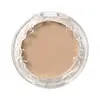What's inside
What's inside
 Key Ingredients
Key Ingredients

 Benefits
Benefits

 Concerns
Concerns

 Ingredients Side-by-side
Ingredients Side-by-side

Triethylhexanoin
MaskingOctyldodecanol
EmollientSilica
AbrasiveDimethicone
EmollientDibutyl Lauroyl Glutamide
Skin ConditioningOctyldodecyl Neopentanoate
EmollientDisteardimonium Hectorite
StabilisingIsostearyl Alcohol
EmollientOleyl Alcohol
EmollientPolymethyl Methacrylate
Pyrus Malus Fruit Extract
Skin ConditioningDisodium Stearoyl Glutamate
CleansingMica
Cosmetic ColorantHydrolyzed Sodium Hyaluronate
Skin ConditioningPolysilicone-11
Water
Skin ConditioningButylene Glycol
HumectantCaprylyl Glycol
EmollientPhenoxyethanol
PreservativeAluminum Hydroxide
EmollientCarthamus Tinctorius Seed Oil
MaskingHexylene Glycol
EmulsifyingTocopheryl Acetate
AntioxidantTocopherol
AntioxidantAscorbic Acid
AntioxidantDecyl Glucoside
CleansingGlycerin
HumectantSodium PCA
HumectantSodium Lactate
BufferingArginine
MaskingAspartic Acid
MaskingPCA
HumectantSaccharomyces/Magnesium Ferment
Glycine
BufferingAlanine
MaskingSerine
MaskingValine
MaskingSaccharomyces/Copper Ferment
Skin ConditioningPotassium Sorbate
PreservativeSaccharomyces/Silicon Ferment
Skin ConditioningIsoleucine
Skin ConditioningProline
Skin ConditioningThreonine
Saccharomyces/Zinc Ferment
Skin ConditioningHyaluronic Acid
HumectantSaccharomyces/Iron Ferment
Skin ConditioningSilanetriol
Citric Acid
BufferingSorbic Acid
PreservativeHistidine
HumectantPhenylalanine
MaskingTitanium Dioxide
Cosmetic ColorantIron Oxides
Triethylhexanoin, Octyldodecanol, Silica, Dimethicone, Dibutyl Lauroyl Glutamide, Octyldodecyl Neopentanoate, Disteardimonium Hectorite, Isostearyl Alcohol, Oleyl Alcohol, Polymethyl Methacrylate, Pyrus Malus Fruit Extract, Disodium Stearoyl Glutamate, Mica, Hydrolyzed Sodium Hyaluronate, Polysilicone-11, Water, Butylene Glycol, Caprylyl Glycol, Phenoxyethanol, Aluminum Hydroxide, Carthamus Tinctorius Seed Oil, Hexylene Glycol, Tocopheryl Acetate, Tocopherol, Ascorbic Acid, Decyl Glucoside, Glycerin, Sodium PCA, Sodium Lactate, Arginine, Aspartic Acid, PCA, Saccharomyces/Magnesium Ferment, Glycine, Alanine, Serine, Valine, Saccharomyces/Copper Ferment, Potassium Sorbate, Saccharomyces/Silicon Ferment, Isoleucine, Proline, Threonine, Saccharomyces/Zinc Ferment, Hyaluronic Acid, Saccharomyces/Iron Ferment, Silanetriol, Citric Acid, Sorbic Acid, Histidine, Phenylalanine, Titanium Dioxide, Iron Oxides
Alternatives
Ingredients Explained
These ingredients are found in both products.
Ingredients higher up in an ingredient list are typically present in a larger amount.
Mica is a naturally occurring mineral used to add shimmer and color in cosmetics. It can also help improve the texture of a product or give it an opaque, white/silver color.
Serecite is the name for very fine but ragged grains of mica.
This ingredient is often coated with metal oxides like titanium dioxide. Trace amounts of heavy metals may be found in mica, but these metals are not harmful in our personal products.
Mica has been used since prehistoric times throughout the world. Ancient Egyptian, Indian, Greek, Roman, Aztec, and Chinese civilizations have used mica.
Learn more about MicaTocopherol (also known as Vitamin E) is a common antioxidant used to help protect the skin from free-radicals and strengthen the skin barrier. It's also fat soluble - this means our skin is great at absorbing it.
Vitamin E also helps keep your natural skin lipids healthy. Your lipid skin barrier naturally consists of lipids, ceramides, and fatty acids. Vitamin E offers extra protection for your skin’s lipid barrier, keeping your skin healthy and nourished.
Another benefit is a bit of UV protection. Vitamin E helps reduce the damage caused by UVB rays. (It should not replace your sunscreen). Combining it with Vitamin C can decrease sunburned cells and hyperpigmentation after UV exposure.
You might have noticed Vitamin E + C often paired together. This is because it is great at stabilizing Vitamin C. Using the two together helps increase the effectiveness of both ingredients.
There are often claims that Vitamin E can reduce/prevent scarring, but these claims haven't been confirmed by scientific research.
Learn more about Tocopherol